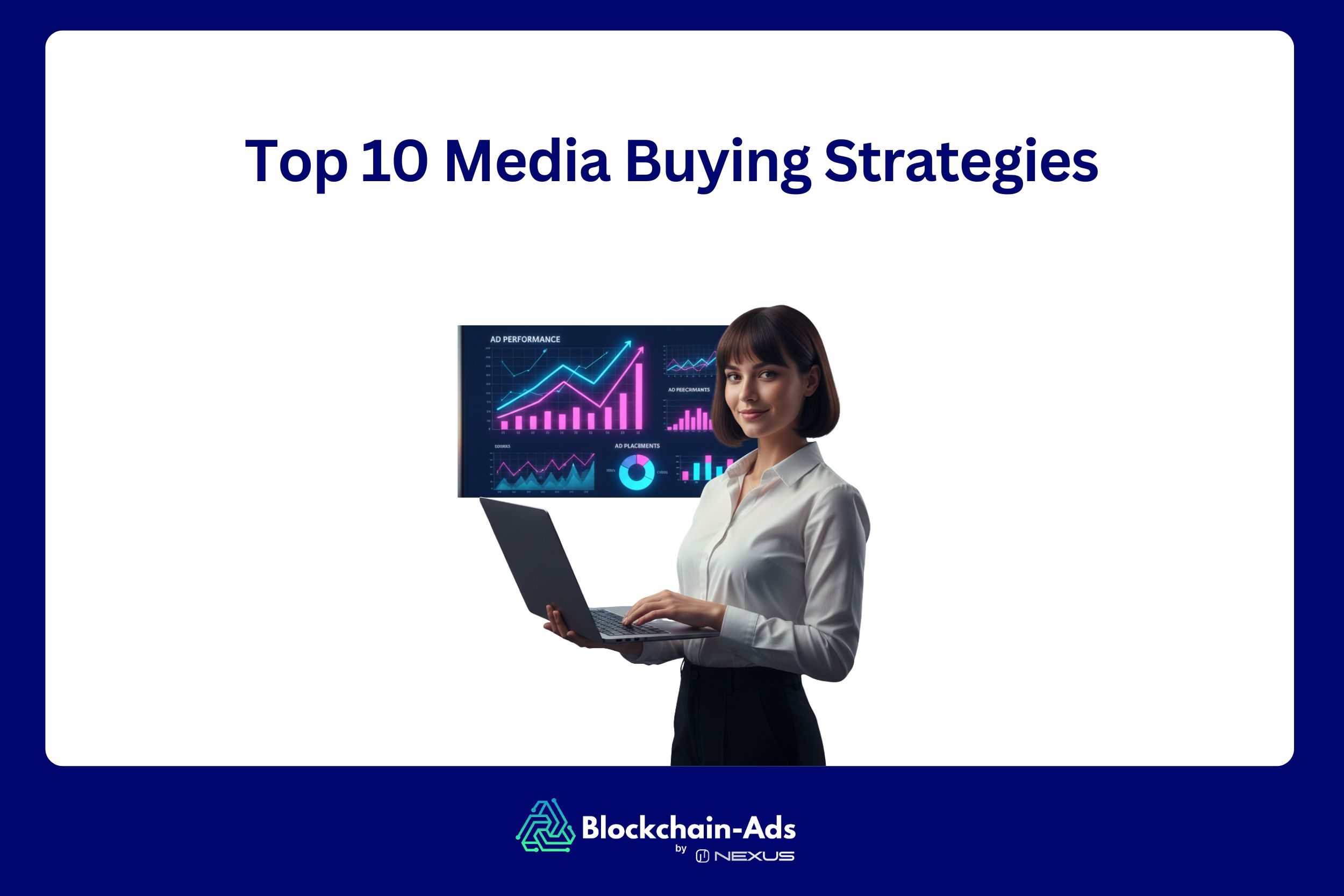展演广告:概念、格格式、类型、运作方式、工具及最佳实践
展示广告是数字营销的重要元素,是建立品牌知名度和支持转化目标的一种具有成本效益的工具。它是一种在线广告,它结合了众多应用程序、网站和在线平台上的图像、文字和良好的CTA。
展示广告已经从传统的横幅广告演变为视频广告、富媒体和程序化广告格式。这使它们成为营销必备品,用于通过多个渠道与目标受众建立联系。与全球同行 数字广告支出 预计到2026年将达到8,360亿美元,这是了解这种在线广告展示广告格式用处的最佳时机。本文将告诉你所有你需要了解的关于这种广告格式的知识以及使其发挥作用的最佳实践。
什么是展示广告?
展示广告是出现在第三方网站上的可点击视觉广告, 社交媒体平台,以及移动应用程序。它们是一种数字广告形式,结合了文案、视觉元素、CTA(号召性用语)和登录页面链接。
展示广告的示例包括图片(横幅广告)、视频或称为富媒体广告的不断变化的文字。这些网站投放的广告非常灵活,因此广告商可以根据其形状和大小来创建引人入胜的内容。这就是为什么你会在网站的顶部、底部、侧面或中间看到各种各样的 GIF、文本、视频或图像的原因。无论它们如何出现,大多数展示营销活动都用于提高知名度、通过游戏和拼图吸引用户或进行教育。
常见的展示广告尺寸是多少?
这个 互动广告局(IAB) 创建了展示标准广告单元组合,可作为广告商的指南。当然,这些只是广告尺寸的标准格式,不同的在线平台可能有自己的规格。尽管如此,你可以在网上找到的最受欢迎的格式包括:
- 300x250
- 728x90
- 160x600
- 300x600
- 320x50
1. 300x250
300x250 是一个中等大小的矩形横幅,它通常出现在屏幕底部或集成到内容中。它的尺寸在移动设备和台式机上都能很好地运行,可以适应大多数广告格式,例如文字广告和视频广告。对于移动网站来说,这个广告尺寸也可以很好地作为分页符。
.png)
2. 728x90
这种广告被称为排行榜横幅或水平横幅,尺寸很大,非常引人注目。它通常位于发布商网站的顶部,是用户看到的第一则广告。因此,它非常适合吸引用户和提高品牌知名度。

3. 160x600
这是宽大的摩天大楼横幅(或立式横幅),你可以在网页的两侧找到它。由于它可以垂直覆盖整页的侧面,因此用户会更容易注意到它。使用这种广告尺寸,广告可以用多张图片进行动画处理,也可以以图片广告的形式出现,从而吸引读者的注意力。

4. 300x600
这是摩天大楼大小的大型展示广告,它占据了半页(180,000 像素)。在如此大的尺寸下,广告商可以组合图像、视频和文本,从而产生引人注目的多媒体内容。

5. 320x50
这是移动排行榜,一种常见的横幅尺寸,出现在屏幕顶部或移动平台的内容中。它是手机上显示的数字广告展示广告的最佳尺寸之一。它提供快速的加载时间和轻松的文件大小优化。

这些广告尺寸可用于制作当今流行的展示广告类型,包括富媒体、可扩展广告、叠加广告和插页式广告。尽管如此,在线展示广告仍在不断发展,以对抗广告疲劳和横幅失明。
因此,IAB在2017年推出了新的广告指南以反映这一点。他们介绍了增强现实 (AR)、虚拟现实 (VR)、360 度视频广告、移动视频广告等指南。
展示广告的类型(附示例)
展示广告差异很大,但品牌可以使用的一些格式是:
- 横幅广告
- 富媒体广告
- 视频广告
- 插页式广告
- 上下文格式和类似原生的格式
根据上面的一篇论文 阿姆斯特丹传播研究学院,用户的感知因格式而异。这表明正确的展示广告格式对于传达所需信息并与托管网站的总体主题保持一致是多么重要。
横幅广告

这些是传统的静态或动画广告。它们用于品牌知名度和一般促销。横幅广告可以提高品牌知名度,并且在台式机、移动设备和平板电脑上效果良好。这个 第一个横幅广告 由 AT&T 于 1994 年在 HotWired 上运营。
富媒体广告

这些在线广告非常适合通过互动元素吸引用户,并且可以在移动设备和台式机上使用。这些广告以浮动或可扩展的互动媒体(通常称为富媒体广告)的形式传达您的信息。你今天看到的一些富媒体广告以游戏或拼图的形式出现。
视频广告

视频广告适合在手机、台式机和智能电视上讲故事和发布产品演示。这种形式的展示广告可以以插播广告的形式出现,在流媒体平台上播放视频时,广告会在片前或片中显示。在某些情况下,您还会在网站上找到外流视频广告。弹出视频广告可以有效地吸引注意力,而区块链广告的DSP视频库存是利用这一点的最佳方式。
插页式广告

这些广告是针对应用程序安装提示或高影响力的展示广告活动而显示的。它们在智能手机应用程序或移动网站上以全屏弹出窗口的形式出现。尽管插页式广告有效,但其行为可能会破坏用户体验。
上下文格式和类似原生的格式

这包括信息流中的展示广告、叠加广告和赞助展示位置之类的内容。这些展示广告具有很高的价值,因为它们具有视觉上的品牌,但却融入了周围的媒体。因此,用户会看到它们,但他们不会在它们出现的平台上打断用户体验。
展示广告的工作原理
以下是有关如何执行展示广告活动的分步指南:
- 定义您的受众
- 设定活动目标和预算
- 选择展示广告格式
- 创建广告素材并调整其大小
- 发布广告并进行流量
第 1 步:定义您的受众
在创建展示广告活动时,你要注意的第一件事是决定要向谁展示它们。您可以根据地理位置、行为、人口统计、链上行为(区块链广告的独特功能)或兴趣对受众进行细分。
你甚至可以进行再营销,即重定向广告,为过去看过你产品的个人提供营销服务。相似受众群体是定义理想受众的另一种选择,还有根据谷歌的亲和力、意图、细分市场和其他平台提供的自定义细分受众群体。
第 2 步:设定活动目标和预算
整理好受众后,您可以为成功的活动定义目标。为此,你可以选择最能代表你期望结果的关键绩效指标 (KPI)。
因此,您可以设置希望达到的知名度(曝光量和覆盖面)以及所需的参与度(点击率(CTR))。您还可以设置转化率、每次点击成本 (CPC)、每千次曝光成本 (CPM) 和广告支出回报率 (ROAS) 等绩效指标。
尽早选择关键绩效指标会影响你的创作方向和出价策略,从而使广告活动的这些要素能够有效地保持一致。这样,您的营销活动将得到更好的优化,以有效发挥作用。
第 3 步:选择展示广告格式
现在,您必须选择显示广告的广告格式。您选择的格式应有效地传达您的品牌或产品的独特优势。大多数广告商通常会坚持使用流行的IAB规模,因为大多数平台都支持这种规模。这就是为什么你应该使用区块链广告来做广告的原因,因为该平台支持标准的300x250、320x100、728x90和320x50广告尺寸,采用横向或摩天大楼格式的图片。
第 4 步:创建和调整广告素材的大小
在创建营销媒体时,应强调清晰度、简单性和移动响应能力。这意味着小型广告格式应优先考虑CTA(号召性用语),而大型广告格式应在标题下方包含正文。其他最佳做法包括可读字体、高分辨率图像和粗体 CTA 按钮。CTA的经验法则是使您的CTA以福利为导向,将福利与活动挂钩,例如 “订阅并保存”,“立即观看” 和 “获取免费副本”。避免让用户不知所措;坚持使用简单、清晰的信息,以有效地传达您的价值。
第 5 步:发布广告并进行流量
创作完成后,下一步是流量广告。这是为了确保它们按规格导出并按计划发送到DSP(需求端平台)或广告服务器。此步骤还包括从确保广告尺寸满足平台要求到创建跟踪像素、进行质量保证测试以及确保全面预算交付的所有内容。
第 6 步:监控指标并进行优化
现在您的广告已经上线,有效衡量展示广告的效果至关重要。点击率等关键指标表明您的广告是否吸引了用户,而曝光量则显示了广告的展示频率。每次点击费用会显示您增加流量的成本,而广告支出回报率则用于衡量广告活动的收入效率。
与传统广告网络相比,Blockchain-Ads提供高级指标,例如可见度、每笔钱包交易成本、受众重叠报告和强大的受众定位功能。该平台还提供视觉效果、A/B测试CTA和头条新闻方面的指导,以避免自动播放的视频广告弹出,这可能会损害用户体验。
第 7 步:分析学习并改进
分析广告活动结果有助于确定哪些有效,哪些无效。优化的三大杠杆是受众群体、广告素材和出价策略。记录这些经验可以完善受众概况、定位相似受众广告和增强创意执行力,从而改善未来的展示广告活动。
显示广告定位选项

广告商使用很多方法来指定谁可以看到他们的广告,常见的选择包括:
- 情境定位
- 受众定位
- 链上行为定位
- 再营销和重定向
- 投放定位
情境定位
这种方法不是直接定位用户,而是利用受众访问的网页的内容。情境定向广告包括根据页面内容(例如特定的关键字和主题)向用户展示这种形式的广告。
受众定位
在这里,根据目标消费者的在线行为、心理特征、人口统计和兴趣来展示广告目标消费者。区块链广告通过其自定义受众群体提供此功能。
链上行为定位
这是区块链广告的独特功能,它允许品牌根据其区块链活动来锁定Web3用户。这就像以精确定位的精确度将受众定位在类固醇上。
再营销和重定向
品牌可以向之前使用此选项与其平台或产品进行过互动的用户展示广告。这些类似受众广告的主要形式是基于像素和列表的。通过基于像素的重定向,您可以从网站访问者的行为中收集实时数据。另一方面,基于列表的重定向使用现有的访客数据(例如电子邮件和电话号码)。
最后,重定向和再营销广告会提供反映用户兴趣的广告。根据研究 埃森哲,这是91%的互联网用户更喜欢的。
投放定位
如果您确切知道要在哪里展示广告,则可以获取其网址并使用它。此定位选项允许广告商选择特定的着陆页、网站或YouTube频道,并在那里展示他们的广告。
手动投放与情境定位相结合时,效果最佳。这意味着您知道广告将在哪个网站上投放,并且可以让您的媒体做好准备,以匹配该平台的背景。
顶级展示广告平台有哪些?

这个 展示广告的最佳平台 是:
- 区块链广告
- 谷歌显示网络
- 亚马逊 DSP
- 其他网络和工具,如 StackAdapt、The Trade Desk 和 Meta Audience Network
区块链广告

区块链广告是管理任何注重增长的品牌的最先进的展示广告平台。它是新兴、成熟和受到严格监管的行业的最佳选择,例如银行、成人娱乐、DeFi、iGaming、CBD和外汇交易领域。它提供所有标准横幅尺寸,富媒体单元和交互式元素可提高知名度。借助区块链广告,品牌可以享受广泛的受众范围(尤其是在 Web3 人群中)、精确的受众细度、统一的堆栈工作流程和久经考验的性能。
谷歌展示网络 (GDN)
.png)
这是一个广告平台,涵盖了谷歌旗下的数百万个网站和应用程序,例如YouTube和Gmail。有了这个,它能够为90%以上的互联网用户带来展示广告。这使其成为展示广告最广泛使用的选项之一,非常适合情境和市场内定位。计划将来扩大广告活动的广告商在GDN上这样做不会遇到任何麻烦。
亚马逊 DSP

亚马逊 DSP(需求方平台)是一个展示广告平台,允许广告商购买广告投放位置并吸引亚马逊内外的受众。可以在产品商店、产品详情页面和品牌网站(如Twitch、Prime Video和Kindle)上看到来自亚马逊DSP的展示广告。该网站提供动态创意交付,并带有内置指标。它为广告商提供了访问发布商服务、营销云和亚马逊广告服务器的权限。
其他网络和工具
除了上述选项外,您可以使用的其他展示广告平台包括:
- 元受众网络: 这是来自Meta(前身为Facebook)的移动广告网络,它允许开发者通过Facebook、Messenger、Instagram和其他第三方网站通过其应用程序获利。该平台利用 Meta 的受众数据进行精确定位,并提供实时效果跟踪和广告投放控制的访问权限。
- StackAdapt: 这是一款人工智能驱动的 DSP,允许数字营销人员规划、执行和优化跨多个渠道的展示广告活动。它提供高级定位功能、人工智能驱动的优化和实时见解。
- Criteo: Criteo是一家全球广告公司,专门允许品牌在购物之旅中与客户建立联系。该平台提供各种展示广告格式,包括富媒体、图片广告和视频广告。其高级定位功能利用情境信号、第一方数据和行为见解。
- 交易台:这是一个DSP,允许品牌通过实时竞价通过各种渠道获取在线广告库存。借助该平台,您可以获得全面的分析、基于人工智能的优化、全渠道广告和高级定位功能。
展示广告的好处
展示广告是覆盖面和效果的完美结合,其优势在于:
- 可测量且可跟踪
- 性价比高且灵活
- 跨渠道工作
- 可扩展的覆盖范围
可测量且可跟踪
展示营销允许实时跟踪诸如每次点击费用、点击率和广告支出回报率等重要指标。利用这些指标,广告商可以确定广告是否对目标受众产生了预期的效果。使用区块链广告部署展示广告的品牌将免费获得这种活动前/后的分析。
性价比高且灵活
展示广告比传统的广告方式更实惠,而且具有很大的灵活性。在线广告可以采用多种视觉效果和号召性用语进行部署,可以在活动中期进行修改。
跨渠道工作
展示广告很容易与其他广告格式结合使用。当它们与其他广告格式结合使用时,它们可以提高广告支出回报率,并将销售时间缩短21%。
可扩展的覆盖范围
展示广告可以在不损失效果的情况下针对多种格式、受众和设备进行调整。这使品牌能够利用区块链广告的精确定位、亚马逊上的第一方生态系统以及亚马逊上超过200万个网站的优势 GDN。
常见的展示广告挑战(以及如何避免这些挑战)
尽管它提供了许多好处,但展示广告仍然存在一些弱点,这些弱点将在下面以及可行的解决方案中显示:
展示广告疲劳
消费者可能会看到展示广告的次数过多,导致他们失去兴趣或在下次看到时忽略它。这是广告疲劳,是展示广告的缺点之一,它会严重影响展示广告的功效。因此,使用频率上限来限制用户看到广告的次数并轮换广告素材非常重要。
旗帜失明
在线广告曝光过多会导致用户出现横幅盲症。这是一种他们在不知不觉中忽略了网站上所有类似横幅的元素的现象。为了解决这个问题,广告商可以使用与用户相关的内容作为创意。毕竟,个性化广告比普通广告更成功地定位消费者。广告商还需要考虑广告投放平台的背景,才能成功开展活动。
低点击率和可见度
为了提高展示广告的点击率(点击率),品牌可以在广告中使用高质量的图片并细分受众。监控和调整关键字以及优化产品描述也很有用。A/B 测试是通过测试各种图像、标题和描述来确定哪些图像的点击率较高来提高可见度的另一种选择。
6 个经过验证的展示广告的 CTA 示例
为了提供最佳效果,展示广告必须具有正确的CTA以吸引用户,其中一些最佳广告包括:
- 立即购物: 鼓励互联网用户购买您正在营销的商品
- 了解更多: 提供指向有关你所说内容的更多信息的链接
- 立即观看: 鼓励客户观看您的视频
- 预购: 让互联网用户有机会领先于其他客户
- 预约: 提供预约的机会
- 获取免费副本: 允许互联网用户注册免费产品
你会注意到,所有这些CTA都是以利益为导向的,它们可以快速传达你的信息,并且它们是以转化为中心的目的而创建的。这是展示广告附带的 CTA 应该是什么样子的模型。
展示广告与其他格式的对比
在下面,您将看到展示广告与其他广告格式的比较以及何时更适合使用它们。
展示广告与原生广告
在展示广告与其他社论内容分开的情况下,原生广告旨在模仿社论内容的展示并与周围的内容融为一体。展示广告的破坏性行为使互联网用户很容易注意到它们,而原生广告则不会造成干扰,可以增强用户体验。尽管启用了广告屏蔽软件的展示广告无法覆盖用户,但名为原生广告的策略可以克服这个问题。展示广告可以提高品牌知名度和重定向,而原生广告最适合以内容为导向的广告活动和讲述故事。
展示广告与搜索广告
搜索广告出现在搜索引擎结果页面 (SERP) 上,而展示广告则出现在应用程序、网站和流媒体平台上。这意味着搜索广告仅以文字形式出现,而展示广告通常使用视频、动画或图像。就成本而言,展示广告的成本低于搜索广告。搜索广告最适合转化率,而展示广告则在渠道的每个阶段都能吸引客户,包括渠道顶层营销、重定向和品牌知名度。
展示广告与视频广告
展示广告可以采用视频、图像或动画横幅的形式,而 视频广告 以视频形式出现。在横幅广告失明会使许多用户忽略展示广告的地方,视频广告就是为了吸引注意力而制作的。如果将视频广告部署在流媒体平台上,则其可见度很高,而展示广告的可见性则适中。
最后要点:如何通过展示广告取得成功
展示广告是21世纪最具成本效益的数字营销解决方案之一,覆盖面广。尽管它饱受广告疲劳和横幅盲之苦,但广告商可以通过创意变化、定期测试和使用正确的平台来缓解这些弱点。这将使展示广告摆在合适的受众面前,提高品牌知名度并产生销售额。但是,请记住,展示广告作为多渠道营销策略的一部分效果最好,绝不能独立使用。
获得资格并获得访问权限 区块链广告
Lorem ipsum color sit amet sit amet,consectetur
快速定义

与我们目前的一些合作伙伴交谈
查看所有成功案例

达到 12M+
在 10,000 多个网站和 37 个区块链上吸引了 Web3 用户。







.png)





